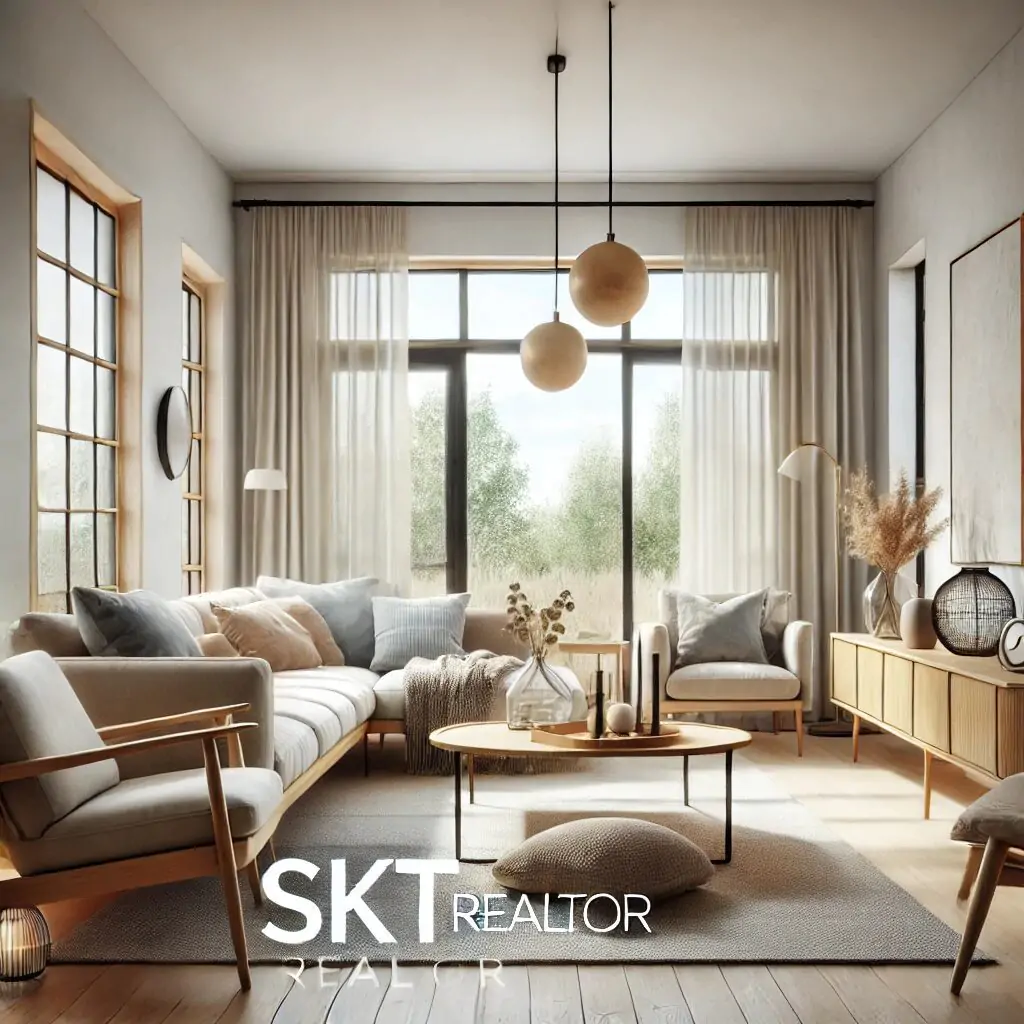
10 Most Inspiring Interior Design Ideas for Your Home
Table of Contents
- Minimalist Design for Modern Homes
- Scandinavian Design: Clean Lines & Functionality
- Industrial Chic: A Raw and Refined Look
- Eclectic Design: Bold Colors & Mix-and-Match
- Mid-Century Modern: Timeless Elegance
- Rustic Style: Bringing the Outdoors In
- Bohemian Vibes: A Free-Spirited Aesthetic
- Traditional Design: Classic Elegance
- Coastal Chic: Breezy and Light
- Contemporary Design: Sleek and Up-to-Date
1. Minimalist Design for Modern Homes
Minimalism has become a popular trend in home interiors, offering clean, clutter-free spaces that emphasize simplicity and functionality. Minimalist home design focuses on the essentials, using neutral color palettes, clean lines, and minimal decor. To achieve this look, focus on creating open, airy rooms with simple furniture, natural light, and minimal decor elements.
2. Scandinavian Design: Clean Lines & Functionality
Scandinavian interior design combines functionality with beauty. This design style is known for its clean lines, light colors, and natural materials like wood. Scandinavian design ideas include furniture with sleek shapes and a focus on comfort and coziness, often incorporating cozy textiles like throws and cushions. It’s an ideal design choice for homeowners looking for a balance between simplicity and warmth.
3. Industrial Chic: A Raw and Refined Look
Industrial chic interior design draws inspiration from factories and warehouses, featuring exposed brick, metal pipes, and open spaces. It often incorporates reclaimed wood, raw metal, and neutral tones to create a modern yet unfinished look. Industrial style interiors give a home a trendy and urban feel, perfect for lofts or open-plan living spaces.
4. Eclectic Design: Bold Colors & Mix-and-Match
Eclectic design allows homeowners to mix and match different styles, colors, and textures, creating a unique, personalized space. Bold colors, mismatched furniture, and a variety of patterns are often key elements in eclectic home design. This style encourages creativity and breaks traditional design rules, making it perfect for anyone who wants to express their individuality.
5. Mid-Century Modern: Timeless Elegance
The mid-century modern design is a timeless classic that never goes out of style. Known for its sleek lines, organic shapes, and use of materials like wood and metal, this design is perfect for homeowners who appreciate both form and function. Incorporating iconic pieces of mid-century furniture can elevate any space into a sophisticated environment.
6. Rustic Style: Bringing the Outdoors In
Rustic design focuses on bringing natural elements indoors, using materials like wood, stone, and earthy tones. This style emphasizes a cozy, lived-in feel with handcrafted furniture and decor. Rustic home design ideas often include large wooden beams, stone fireplaces, and reclaimed wood furniture that add warmth and texture to a room.
7. Bohemian Vibes: A Free-Spirited Aesthetic
Bohemian, or “boho,” design is all about creating a space that feels eclectic, relaxed, and globally inspired. Boho interior design features rich textures, bold patterns, and a variety of colors. Layering rugs, throws, and pillows is a hallmark of this style, creating a comfortable, free-spirited living environment that reflects personal style.
8. Traditional Design: Classic Elegance
Traditional design is rooted in European sensibilities, focusing on classic elegance and ornate details. With plush furniture, dark wood tones, and opulent decor, traditional home interiors create a sense of timeless sophistication. Incorporating antiques, classic artwork, and rich fabrics can add an extra layer of luxury to this design.
Keywords: Traditional home interiors, classic elegance, ornate details
9. Coastal Chic: Breezy and Light
Coastal design is perfect for those who love the beach. This style embraces light, breezy spaces filled with natural light, neutral tones, and nautical elements like driftwood, coral, and seashells. Coastal home interiors often incorporate shades of blue and white to evoke the feeling of being near the sea, creating a relaxing and peaceful atmosphere.
10. Contemporary Design: Sleek and Up-to-Date
Contemporary design reflects the current trends, often featuring sleek furniture, minimalist decor, and bold statement pieces. It combines functionality with aesthetic appeal, making it a popular choice for modern homes. Contemporary interiors focus on clean lines, open spaces, and a neutral color palette with occasional pops of color for visual interest.
Frequently Asked Questions (FAQ)
Q2: How can I achieve a Scandinavian design look? A: To achieve a Scandinavian design look, focus on natural materials like wood, a neutral color palette, and clean lines in your furniture choices. Add cozy textiles for warmth and comfort.
Q3: What are the key elements of industrial interior design? A: Industrial interior design is characterized by raw materials like exposed brick and metal, open spaces, and minimalistic decor.
Q4: What makes traditional design different from modern styles? A: Traditional design focuses on classic elegance with ornate details, while modern styles like contemporary or minimalist design emphasize simplicity and function.
Q5: How do I make my home feel more rustic? A: Incorporate rustic design elements such as reclaimed wood, natural materials, and earthy tones. Use handcrafted furniture and decor to add warmth to your space.
CreativeDesign
Start with a Clear Vision: Understand the purpose of each room and the mood you want to create. Gather inspiration from design magazines, Pinterest, and home décor websites.
Embrace Natural Light: Maximize the use of natural light by using sheer curtains, large windows, and strategically placed mirrors to reflect light and make spaces feel more open and airy.
Choose a Color Palette: Select a cohesive color scheme that reflects your style and complements the purpose of each room. Neutral colors with bold accents can create a balanced and inviting atmosphere.
Mix Textures and Materials: Incorporate a variety of textures and materials, such as wood, metal, glass, and fabrics, to add depth and interest to your design.
Focus on Functionality: Ensure that the design is not only beautiful but also practical. Consider the layout, storage solutions, and furniture placement to create a functional and comfortable living space.
Personalize with Art and Accessories: Add personality to your space with artwork, decorative items, and personal collections. These elements can make a space feel unique and lived-in.
Incorporate Greenery: Use plants to bring life and color into your home. They can improve air quality and create a calming environment.
Invest in Quality Pieces: Choose timeless, high-quality furniture and décor that will last. Invest in key pieces like sofas, dining tables, and beds that provide comfort and style.
Create Focal Points: Highlight architectural features or statement pieces in each room to draw attention and create visual interest.
Balance Proportions: Ensure that furniture and décor are appropriately sized for the space. Avoid overcrowding and maintain a balance between different elements.
Layer Lighting: Use a combination of ambient, task, and accent lighting to create a versatile and well-lit space. Dimmer switches can add flexibility to your lighting design.
Stay True to Your Style: While it’s great to follow trends, make sure your interior design reflects your personal taste and lifestyle. This will ensure you feel comfortable and at home in your space.















Comments
4